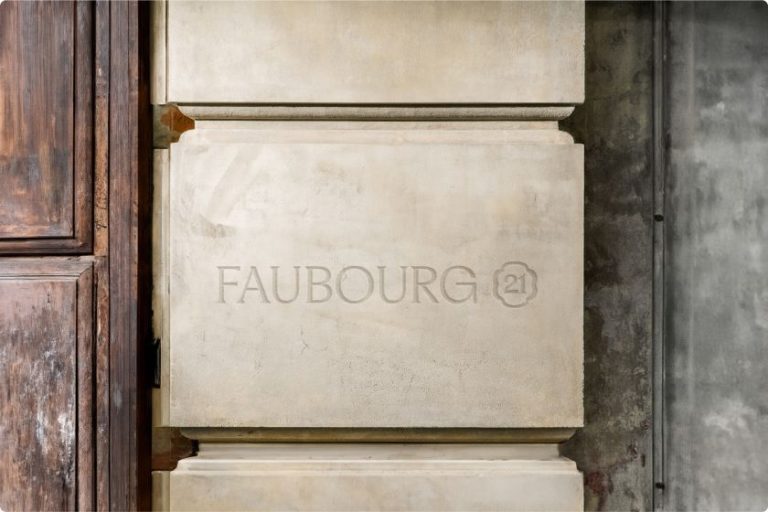Led by Eddie Opara at Pentagram, this new dynamic branding system for security platform MIND uses swirling motion and parametric brainwaves to visualise the platform’s machine-speed threat detection capabilities.
In an industry where technical complexity often translates into visual confusion, Eddie Opara and his team at Pentagram have crafted something remarkable for MIND—a data security platform that operates at machine speed.
Rather than defaulting to the predictable visual language of cybersecurity brands, the identity captures the essence of continuous vigilance through dynamic motion that flows, swarms and transforms. The project represents more than a rebrand; it’s a complete reimagining of how a cybersecurity company can present itself in an increasingly crowded market.
With 85% of organisations suffering data loss events annually and breach costs averaging $4.88 million, MIND’s mission to put data loss prevention and insider risk management on autopilot demanded an identity that could convey both sophistication and accessibility.
Breaking through the noise
The challenge facing Eddie and his team was significant. The B2B cybersecurity market is saturated with products that struggle to differentiate themselves visually, even when their performance capabilities vary dramatically. Most default to a predictable palette of blues and sterile imagery, which fails to effectively communicate their unique value proposition.
“There were several goals for our new brand identity. However, the ultimate one was to help our startup stand out in an ever-increasingly noisy cybersecurity market,” explains Eran Barak, co-founder and chief executive officer at MIND. “We didn’t want to be just like every other B2B enterprise security company—we had to stand out to thrive.”
Eran’s experience with his previous startup informed his approach to brand strategy from the outset. Understanding that a strong go-to-market foundation is crucial for startup success, he recognised that brand identity would be key to MIND’s competitive strategy.
Intelligence in Motion
The breakthrough came through understanding what makes MIND fundamentally different from conventional data security solutions. Where traditional products create blind spots and miss unstructured, sensitive data, MIND operates as an omniscient solution that proactively identifies risks in real-time.
This concept of all-knowing awareness became the foundation for both naming and visual identity. The name itself—MIND—immediately conveys the platform’s intellectual approach to security while remaining memorable and distinct. Eddie leveraged this choice to create a family of smart, engaging messages: ‘Mind What Matters’ serves as the tagline, whilst ‘State of MIND’ introduces the company overview and ‘Top of MIND’ heads the blog.
The site also invites visitors to ‘Tell us what’s on your mind’, creating a cohesive verbal identity that feels conversational rather than corporate.
Fluid intelligence visualised
The visual identity centres on an abstract symbol that captures the essence of fluid intelligence through swelling lines with twist-like oscillations reminiscent of parametric brainwaves. This distinctive detail extends throughout the identity system, appearing in custom icons that maintain visual coherence across all applications.
Typography, meanwhile, remains deliberately straightforward, with Grotesk Söhne from Klim Type Foundry allowing the dynamic elements to take centre stage without competing for attention. The approach reflects Eddie’s understanding that clarity is a competitive advantage in complex technical categories.
The real innovation, though, lies in the motion design, which transforms static brand elements into dynamic narratives. Like an immune system responding to threats or a brain surging with activity, swirling motion flows into the logo and various icons, taking their shape and becoming part of MIND itself.
Swarms of letters surround, absorb and subsume forms in three-dimensional renderings animated with vibrant kaleidoscopic colours that represent data prevention and risk detection.
Strategic colour choices
Elsewhere, the colour palette demonstrates strategic thinking about category conventions. Rather than defaulting to the blues that dominate cybersecurity branding, Pentagram has established a neutral foundation of black, white and grey, punctuated by bright yellow as a secondary colour.
This choice suggests alertness whilst ensuring MIND stands out from competitors. The Navy serves as a tertiary colour, acknowledging category expectations without surrendering to them.
The website and applications reflect what Jimmy Tsang, vice president of marketing at MIND, describes as the “clarity of MIND”—bold, simple interfaces with high visual impact that mirror the platform’s effectiveness. The design system successfully translates across every touchpoint, from the mind.io web experience to videos, event materials and the platform interface itself.
Beyond conventional cybersecurity aesthetics
Overall, this identity is notable for avoiding the visual clichés that plague cybersecurity branding. There are no circuit boards, locks, shields or generic network diagrams. Instead, Eddie has created a visual language that feels organic and intelligent, suggesting both the sophistication of the technology and the calm confidence that comes from knowing threats are being managed autonomously.
The motion design particularly succeeds in making abstract concepts tangible. Watching the identity in action, viewers understand intuitively how MIND operates—not through aggressive confrontation with threats, but through intelligent absorption and transformation of potential risks.
Collaborative excellence
The project showcases the strength of collaborative design, with Eddie working alongside Jun Park, Ruairi Walsh, Cristina Giménez, Issabella Hindley-Cupper and Dana Reginiano at Pentagram. Animator Hannes Weikert brought the motion concepts to life, whilst Decimal Studios handled web development, demonstrating how specialist expertise can elevate brand implementation.
The result is an identity that works equally well in boardroom presentations and developer documentation, maintaining its sophisticated appeal across vastly different contexts and audiences.
Strategic brand thinking
This project exemplifies how thoughtful brand strategy can transform a company’s market position. By moving beyond conventional cybersecurity aesthetics, Eddie has created an identity that positions MIND as the intelligent choice for organisations seeking proactive data protection.
The success lies not just in visual execution but in understanding how brand identity functions as a business tool. In a category where products can seem interchangeable, distinctive branding becomes a crucial differentiator, enabling premium positioning and clearer communication of unique value propositions.
As Jimmy reflects: “We’re proud of the MIND brand identity we forged early in our startup journey. The brand truly shines across every touchpoint, and we’re looking forward to taking our brand experience even further in the coming months and years, limited only by our creativity and minds.”
For creative professionals working in B2B categories, MIND demonstrates how intelligent brand thinking can transform technical complexity into a compelling narrative, creating distinctive market positions through thoughtful visual and verbal identity development.










